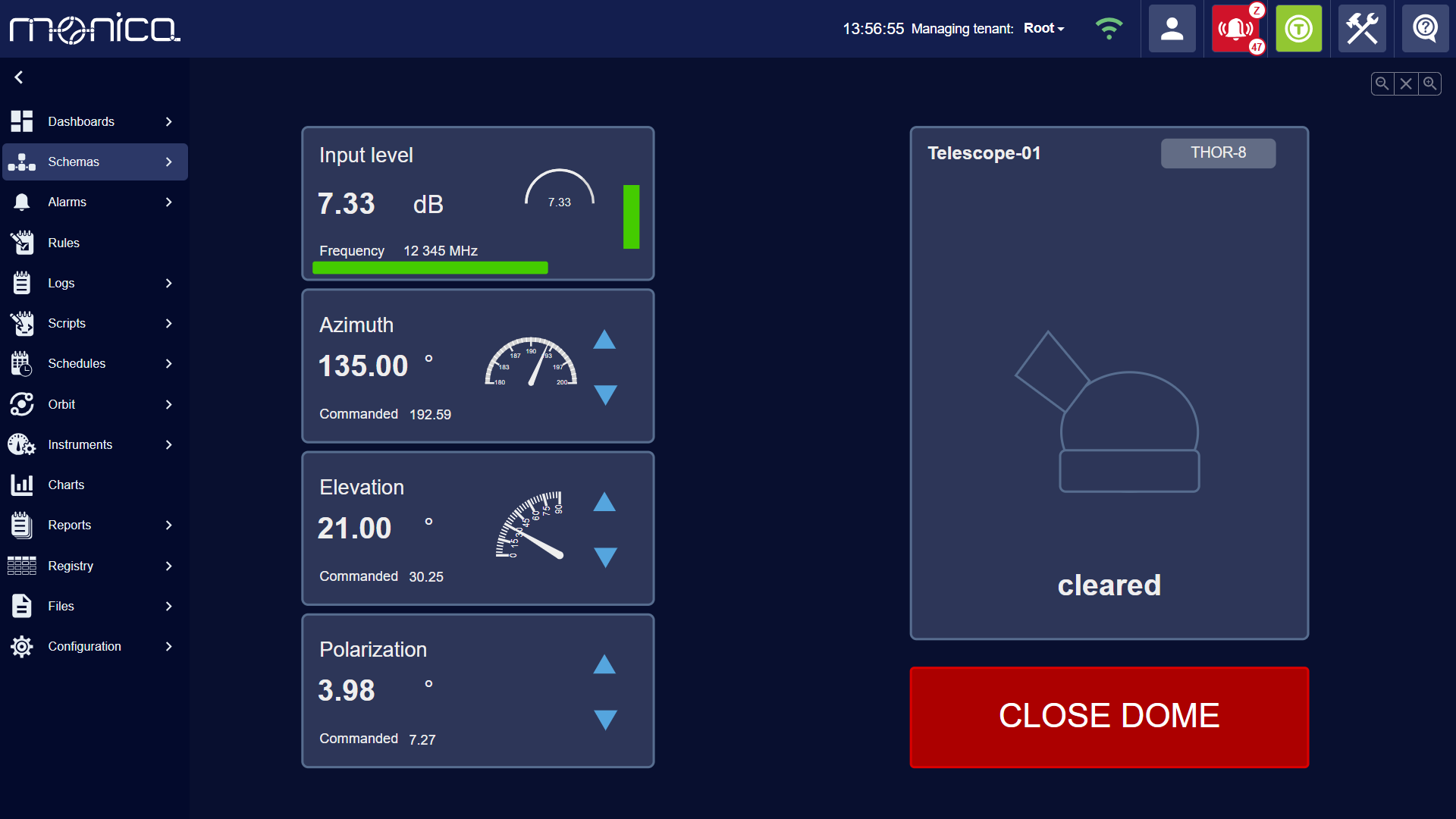Behind the new release: Monica v7.2.0
Introduction
In February 2025, we have released Monica v7.2.0. Multiple features have been added, including a new optional Orbit module. This feature is particularly valuable to satellite and ground station operators, as it enables scheduling of the M&C activities in Monica based on the imported satellite orbit files, resulting in more flexible and efficient ground system resource planning and management.
Meet Monica
If you are new here or simply want a brief recap - Monica is a Monitoring and Control (M&C) solution designed and developed by Amphinicy Technologies to help customers manage ground segment infrastructure and systems with reliability and efficiency.
From RF and optical satcom to television and radio broadcasting, telecommunications, cable TV, and SCADA system management, Monica is trusted across a diverse range of industries to keep critical operations running smoothly.
Version 7.2 summary
Main changes included in v7.2 are:
Orbit module
Bars and gauges on schemas
SNMP improvements
Notifications and prompts
Each new feature is detailed in the sections below. Let's explore the improvements introduced in Monica v7.2.
1. Orbit module
The Orbit module is a new optional module in Monica, handling the import of satellite orbit files. Supported formats are TLE (Two-Line Element), 3LE (Three-Line Element), OEM (Orbital Ephemeris Message) and CPF (Consolidated Prediction Format).
Its main use case is scheduling activities in Monica based on AOS (Acquisition of Signal) & LOS (Loss of Signal) times provided in the orbit files. Each Monica can orchestrate multiple ground stations or antennas per installation. Each ground station is defined with its latitude, longitude and altitude.
For each orbit file and ground station combination, a selection of available passes is displayed:
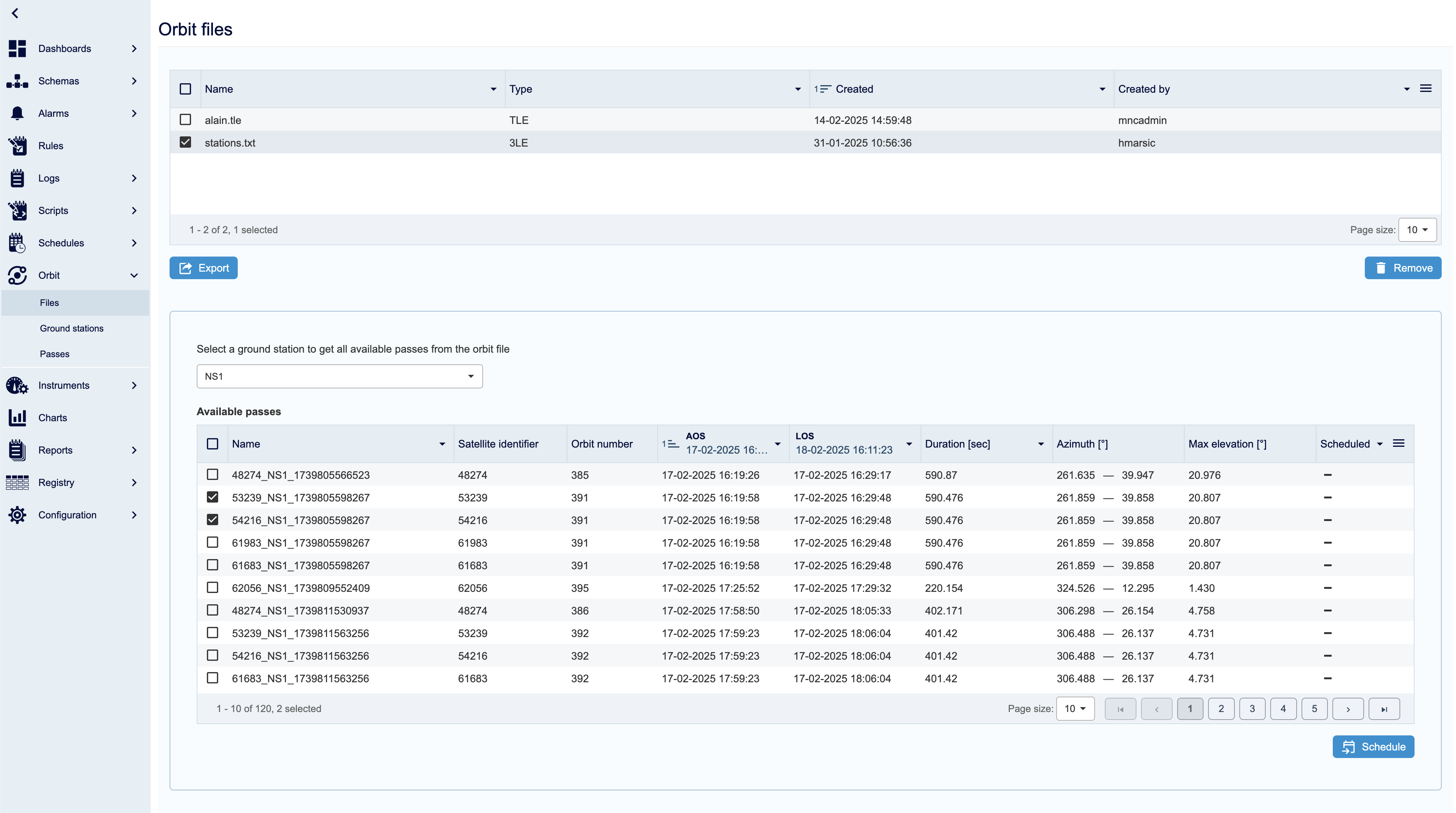
Selected passes can be scheduled in Monica using an interactive wizard. Each pass is mapped to a scheduled job with standard start/end activities and with all features the scheduler offers. An example use case is the configuring of equipment before a pass, and a report generation after the pass. Passes can also be created manually.
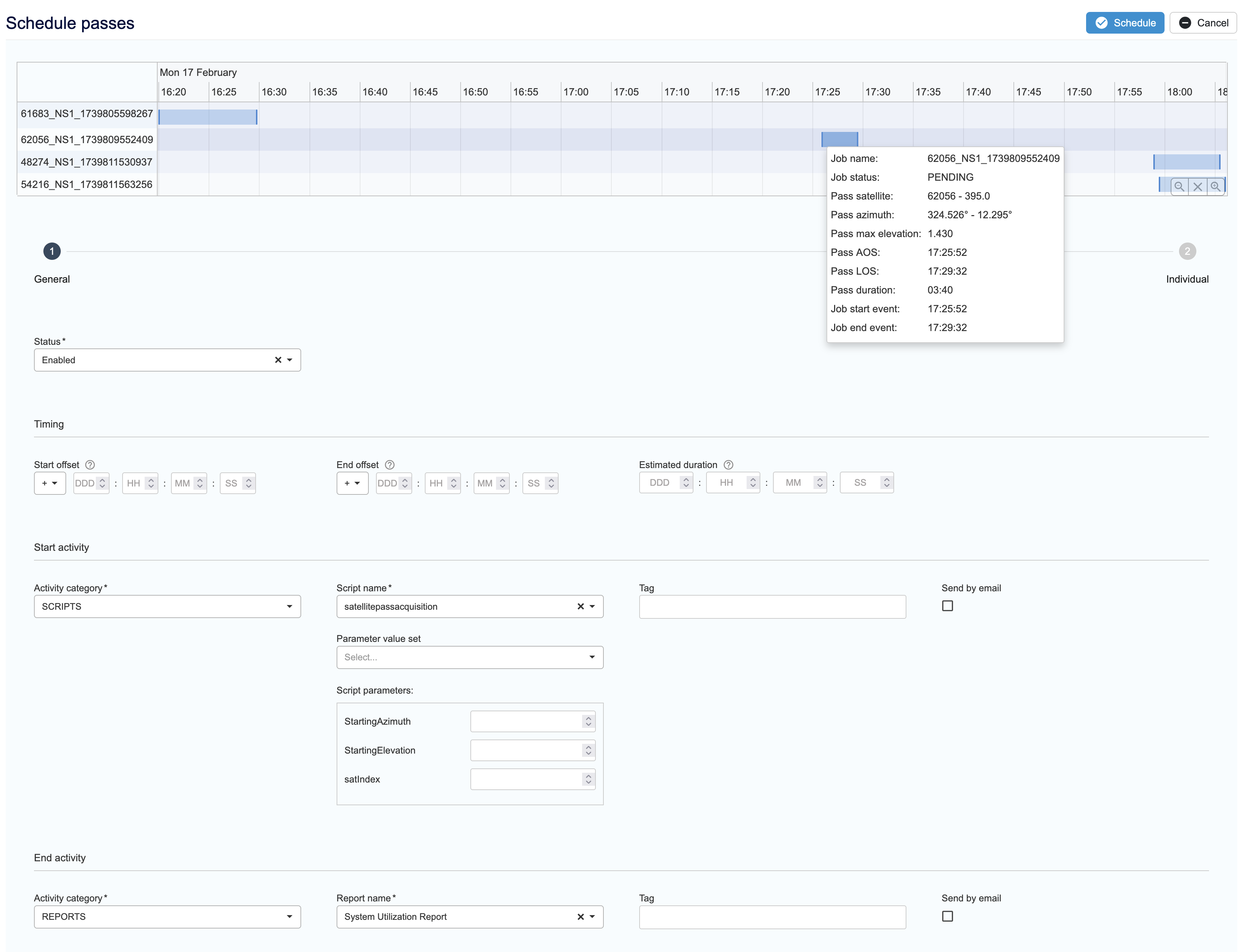
The Orbit module is also exposed to scripting, allowing the creation of custom mappings from orbit files to scheduled jobs. Orbit files can also be fetched from the scripts and transferred to Monica’s instruments, i.e. Antenna Control Units.
There are already many ideas for the evolution of this module - some of them include: satellite orbit visualisation via 3D and polar chart widgets, deeper integration into schemas, and auto-ingestion options.
2. Bars and gauges on schemas
A long awaited feature for schemas has finally arrived - bars and gauges. These display widgets are often mandatory in SCADA use cases, but are also useful in any monitoring solution.
In the scope of this feature, we have added two new shapes to schemas - donut and speedometer gauges, and also added new transform options to all shapes, enabling transformations based on parameter values.
On top of all that, animations are supported out-of-the-box for the new shapes and transformations.
2.1 Donut gauge
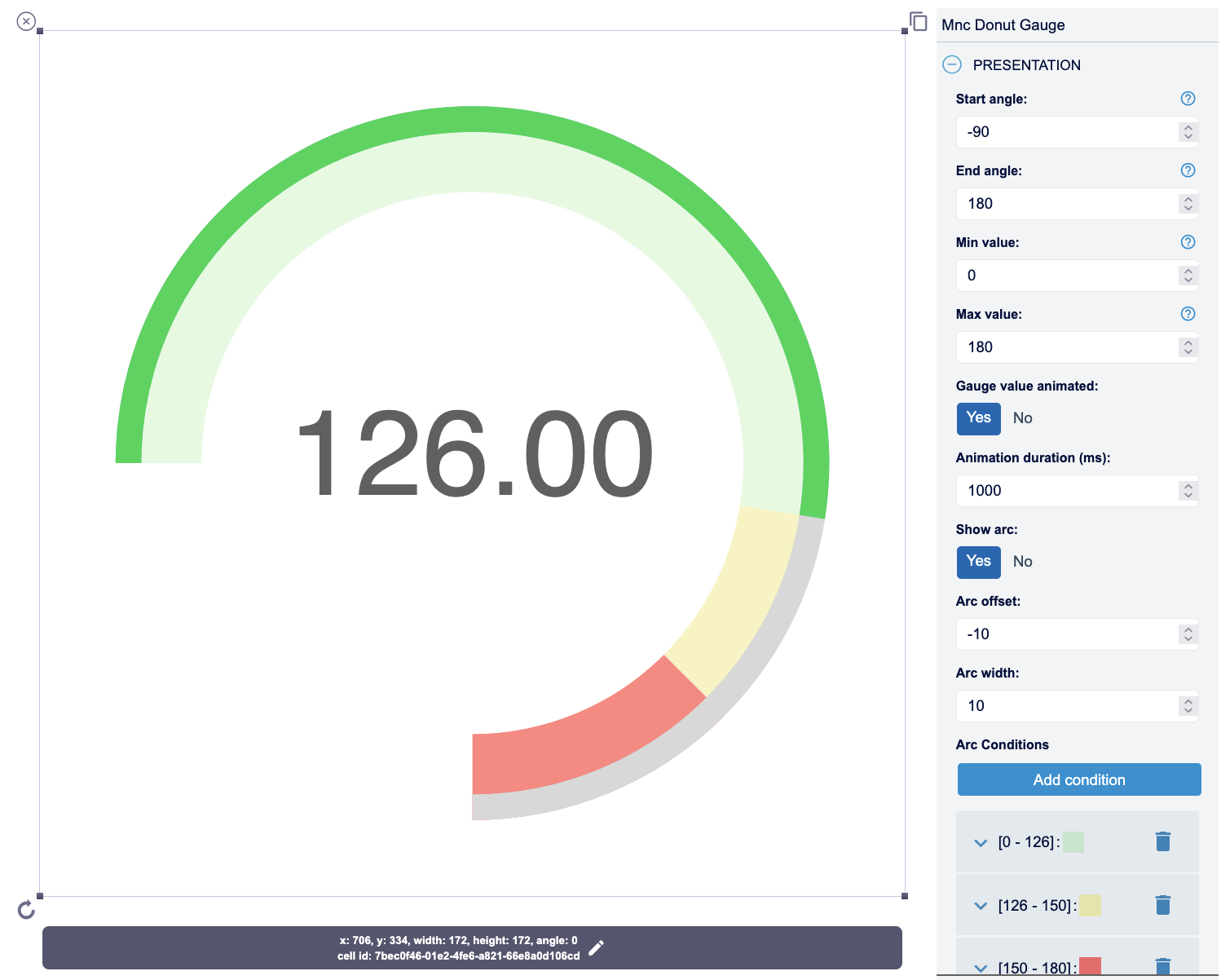
2.2 Speedometer gauge
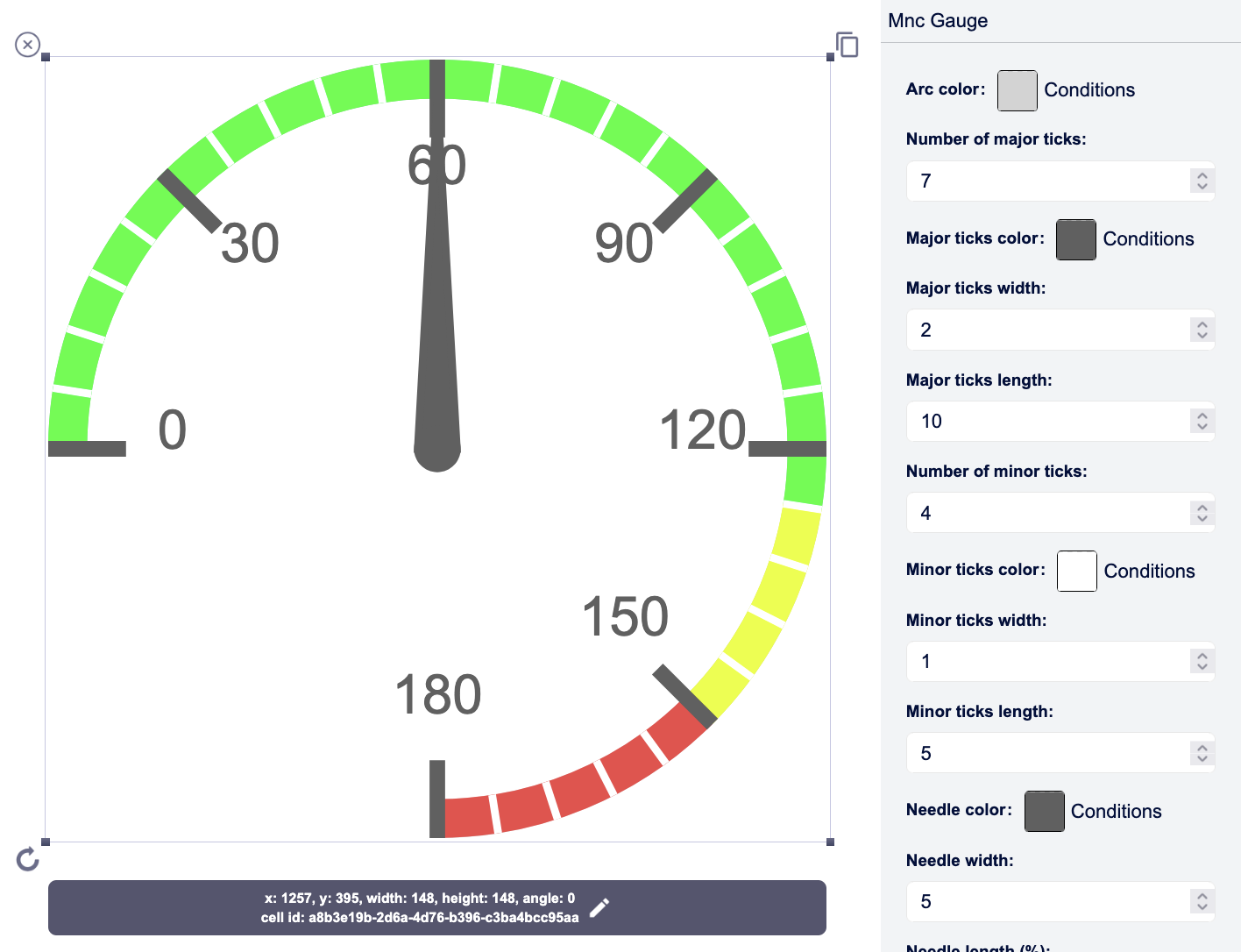
Both donut and speedometer gauge are drawn programatically based on rich customisation options available in the Schema Editor.
2.3 Transform options
Transform options encompass multiple attributes that can be changed on shapes based on Monica parameter values:
2.3.1 Position, scale & rotation
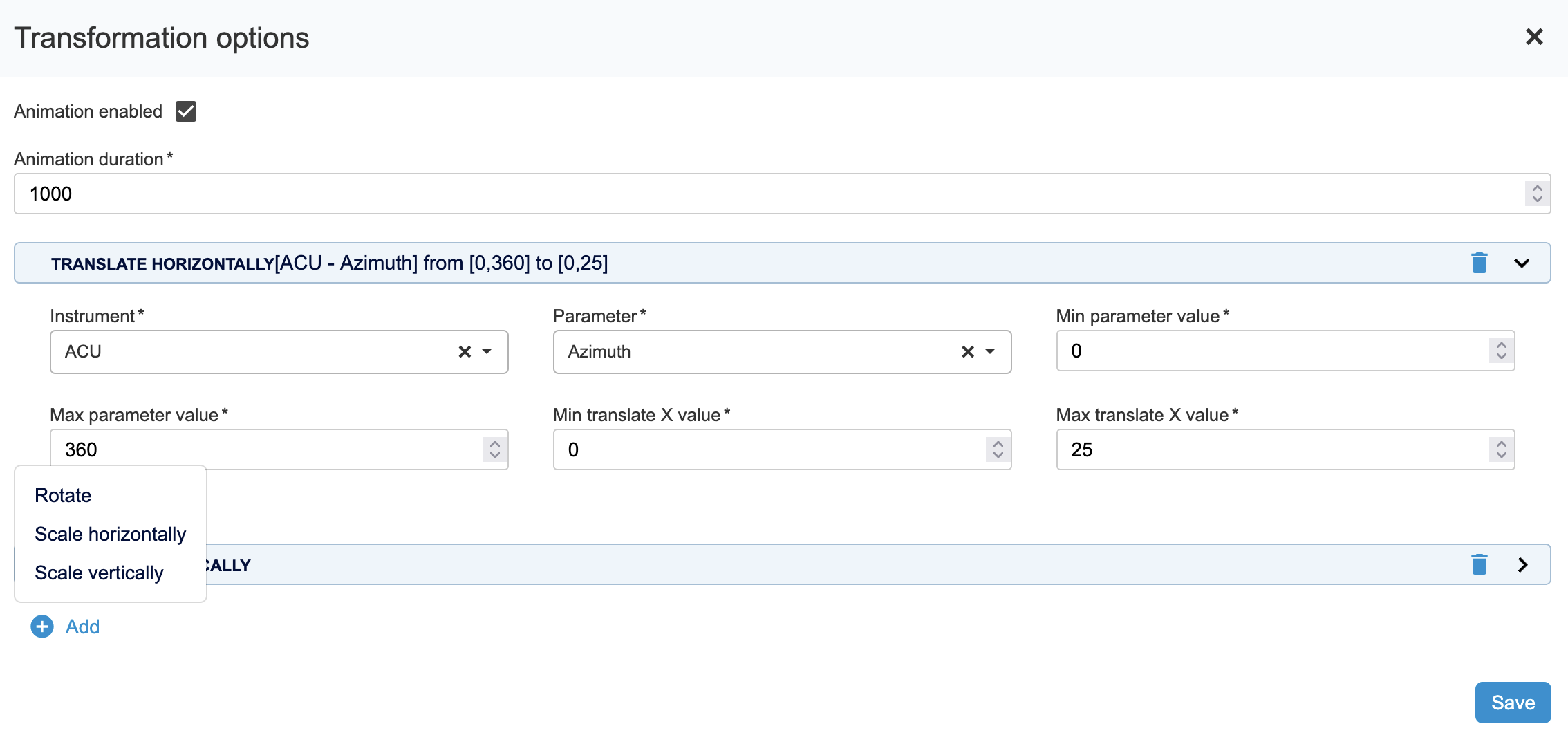
2.3.2 Interpolated colouring
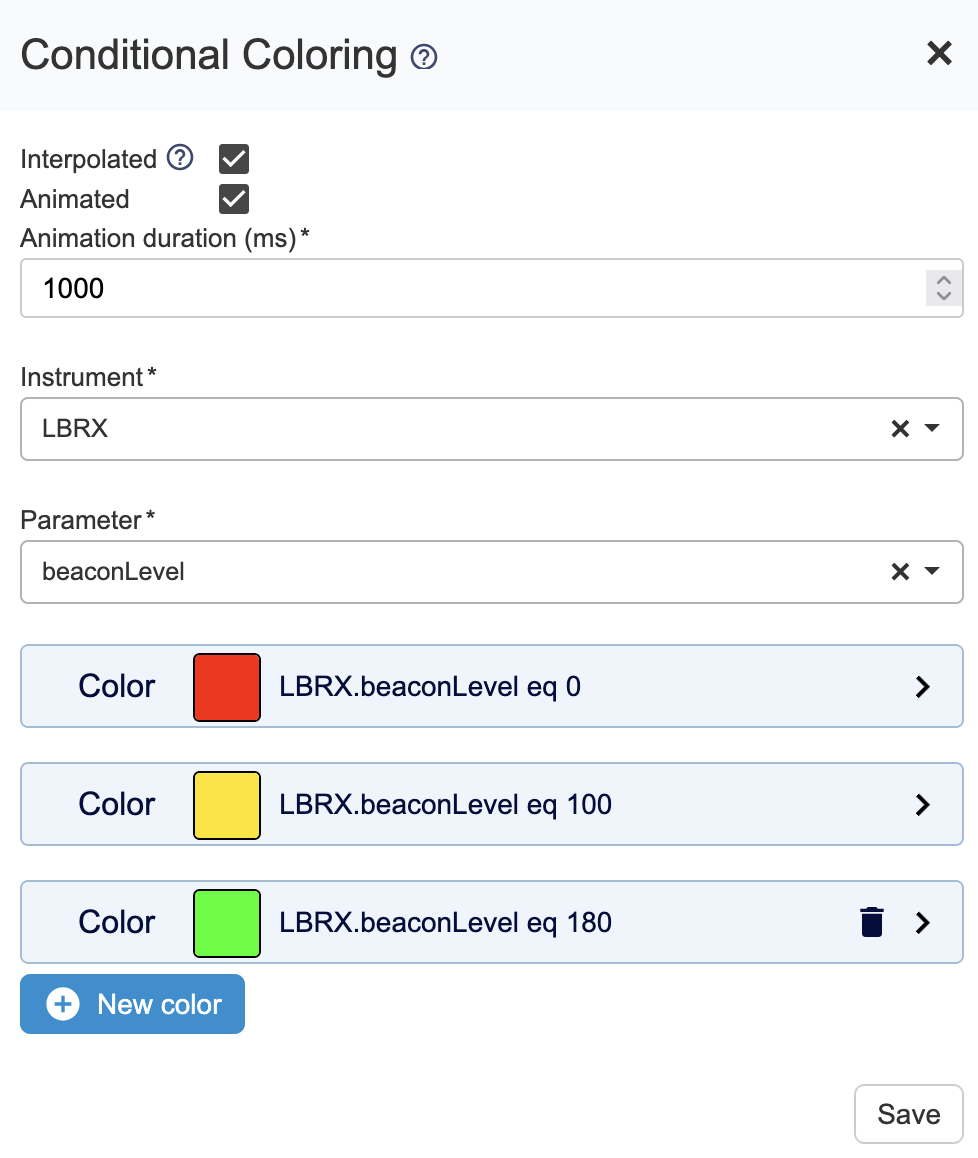
2.3.3 Clip - show part of shape
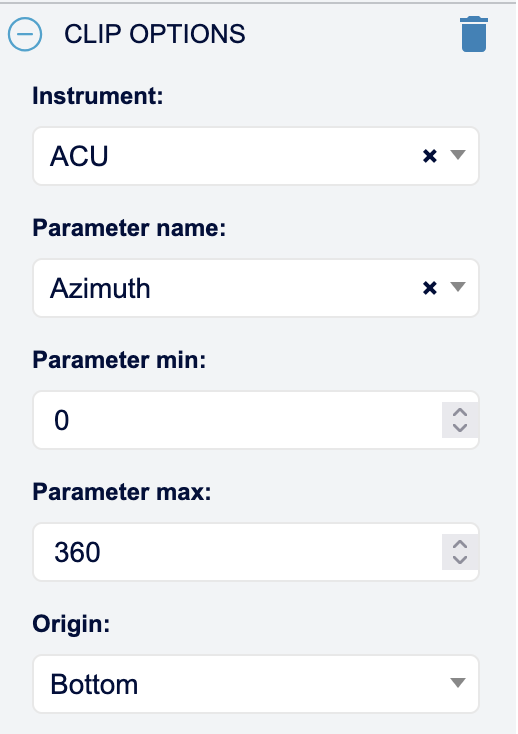
3. SNMP improvements
The SNMP adapter has been improved for some advanced use cases, mainly targeted at tables.
Tables can now be polled using column-based logic, where each column can have its own polling period, constraints, and unit conversions. For this, a new parameter type has been introduced - Array. The array parameter can be combined with Table parameters automatically, using parameter bindings, or manually via scripting.
Tables can also be polled partially without using a parameter for each column, by simply using dot range notation (i.e. 1..5) in table OID.
On top of that, tables can be joined with other tables using different join strategies commonly known from the SQL world, which enables more logical M&C representation of some SNMP device tables. These joint operators are available in templating and scripting blocks for parameter translations.
4. Notifications and prompts
The main goal of this endeavour was to support user prompts during script runtime. The limitation we wanted to address is the current design of Monica scripts, which can have parameters, but all the parameters need to be provided as inputs at the moment of starting the script. This suffices for simple scripts, but for more high level, logic-heavy, or scripts representing workflows maybe branching into multiple sub-scripts, a preferred approach would be to ask for parameters only at the time when these are needed.
As we laid out the detailed requirements of this feature, it turned into a full-blown notification service, where scripts are just one of the possible notification or prompt sources. Each prompt can be configured with text, parameters, responses representing actions, severity, and so on. For now, prompts can be created only via scripts (or a REST endpoint) using a simple utility function:
notifications.showPrompt("mainText", parameters, actions).waitForResponse()

This service leaves a lot of open options for future improvements:
logging service - configure which log types, severities and any other filtered logs should be forwarded to users
alarm notifications - existing implementation will be re-written for the new notification service
persistence of notifications into an audit log
user inboxes
integration with e-mail / SMS service (currently only available for alarm notifications)
5. Other changes
Scheduler timeline widget on dashboard
Schema preferences – show zoom controls, zoom control location, allow zoom, options for fine-tuning schema drawing periods (path highlighting, animations)
Built-in system health alarms (without Monica self-monitoring driver)
Privilege system expansion – all privileges now have read/write option
Parameter display name – new optional field in drivers
What’s next
New features for version 7.3 are completed. We will report about them in the upcoming new release report soon.
Development for version 7.4 is underway, with significant changes planned for version 8.0. Stay tuned for updates.
Contact us
We welcome your feedback and would love to hear about your challenges and needs. Get in touch with us today to discuss how we can work together to enhance your satellite and ground operations.

